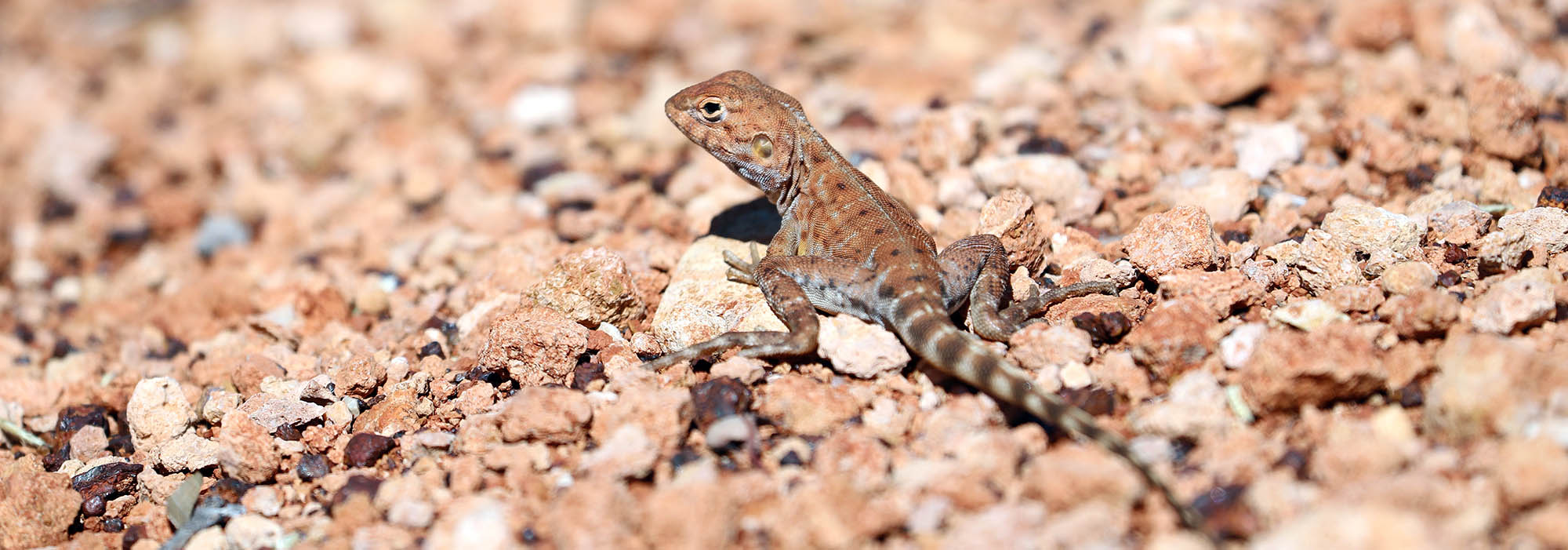ecosystem-guides.com
....exploring the planet's ecosystems
AUSTRALIAN
Arid/Tropical Eucalypt Woodlands
Gorges & Riverine
The Eucalyptus dominated woodlands of the drier areas of tropical & subtropical Australia, including gorges and ephemeral rivers. Other arid habitats that may be adjacent include: the spinifex grasslands found on rocky ground and sand dunes, the Mulga shrublands, and the chenopod shrublands found across temperate southern Australia.
The dry Eucalypt woodlands of the ridges and gullies of arid Australia is where some of Australia's most iconic and celebrated trees live, such as the Coolibah, River Red Gum, and Ghost Gums.
One of the biggest, commonly seen, best known, and most important families of plants on the planet are the grasses of the Poaceae. In the tropical and arid woodlands they are one of the dominant types of plant. Triodia spp. 'Spinifex Grass' or 'Porcupine Grass'. These grasses often grow out, with the older inside of the clump dying, leaving a 'donut ring'. These plants also dominate their own spinifex desert & grasslands.
 A spinifex clump, growing outwards and leaving a 'donut ring'. Hmmm..donuts (Telstra Hill, Mt. isa)
A spinifex clump, growing outwards and leaving a 'donut ring'. Hmmm..donuts (Telstra Hill, Mt. isa)The Fabaceae are sometimes considered one huge family, but more manageably split into recognisable sub-families. The subfamily/family Caesalpinioideae includes Acacia, the biggest genus of plants in Australia. In these arid areas many species of 'Wattle' are often the dominant and most common trees. In the tropical species, what tends to look like the leaves are actually flattened stems called phyllodes, which effectively act like leaves, being photosynthetic. The flowers are mostly yellow, either in balls or spikes. The fruits are brown pods with small black seeds, often with a small yellow or orange fleshy connection.
 Acacia tetragonophylla, 'Dead Finish', (Pilbara, W.A.)
Acacia tetragonophylla, 'Dead Finish', (Pilbara, W.A.) Acacia pyrifolia, 'Ranji Bush', (Pilbara, Western Australia).
Acacia pyrifolia, 'Ranji Bush', (Pilbara, Western Australia).Acacia orthocarpa, '(Pilbara) Weeping Wattle', 'Needleleaf Wattle'. Small tree or bush. Phyllodes are long and narow. Flowers are produced in dull yellow spikes. Black seeds arranged at a slight angle in long slightly bent pods. Found in north-west Australia and NT and to Mt.Isa.
 (Telstra Hill, Mt. Isa)
(Telstra Hill, Mt. Isa)The family/subfamily Caesalpinioideae includes the genus Senna, which has about 250-300 species in this genus (and are often synonymous with Cassia). They usually grow as shrubs or trees, with opposite paired leaflets, mostly with yellow flowers, and large seed pods. They are found throughout the tropics of the world. In Australia they grow mostly as shrubs and are common in arid areas and seasonally dry habitats. The flowers are usually pollinated by bees and often involved in ricochet pollination, where the pollen is ejected during buzz pollination and bounces off petals to land on the back of the bee.
 Senna glutinosa complex, 'Silver Cassia', 'White Cassia', (Millstream National Park, Western Australia)
Senna glutinosa complex, 'Silver Cassia', 'White Cassia', (Millstream National Park, Western Australia) Senna notabilis, 'Cockroach Bush', (Testra Hill, Mt Isa)
Senna notabilis, 'Cockroach Bush', (Testra Hill, Mt Isa)Family Lamiaceae includes Clerodendrum floribundum, 'Loly Bush'. A bush. Produces fragrant white flowers on long stalks, followed by dark purple-black fruits that sit atop a distinctive star-like red calyx. Found in open forest and rainforest edge across tropical and subtropical Australia and southern New Guinea.
 (Bladensburg National Park, Queensland)
(Bladensburg National Park, Queensland)Wolf spiders of the family Lycosidae are very common. A quick look with a head torch at night over the tropical woodlands ground will reveal many twinkling star-like lights; these are the eyes of Wolf Spiders!
 (Bladensberg National Park, Queensland)
(Bladensberg National Park, Queensland)There is one group that is very diverse in these arid habitats of Australia - lizards! In fact, there are claims that some of the dry habitats in Australia, such as the Spinifex grasslands, have the highest diversity of lizards in the world. However, this does not mean you will see lots of them; in the winter they may be scarce, and in the summer, they run fast and quickly take shelter inside and under the prickly grasses.
 'Western Ring-tail Dragon', (Millstream National Park, Western Australia)
'Western Ring-tail Dragon', (Millstream National Park, Western Australia)Dragons of the family Agamidae are found from Europe, to Africa, Asia, Australia, and the south Pacific. There are some 70 species in Australia, and there is a high diversity in the tropical woodlands of northern Australia. Most dragons have large angular heads, sometimes with flaps, spines or frills. They have long bodies, strong hind legs and long toes, and very long tails. They generally have an upright posture and some species can run quickly on their hindlegs when alarmed.

The largest group of dragons in Australia are the Ctenophorus, and they are most associated with arid areas.
 'Slater's Ring-tailed Dragon', (Telstra Hill, Mt.Isa, Queensland)
'Slater's Ring-tailed Dragon', (Telstra Hill, Mt.Isa, Queensland) 'Western Ring-tail Dragon', (Millstream, Western Australia)
'Western Ring-tail Dragon', (Millstream, Western Australia)Emus are by far the biggest birds in the arid habitats across Australia. They can run up to 50 k/p/h, often running in zig-zagging patterns that look comical, but can outmaneuver predators.
 Emu (outside Bladensberg National Park, western Queensland)
Emu (outside Bladensberg National Park, western Queensland)One of the more widespread parrots across the arid habitats of Australia is Barnardius zonarius, the (Australian) 'Ringneck Parrot'.

The Bowerbirds of the family Ptilonorhynchidae are thought of as mostly tropical forest birds, but a group several similar species have adapted to the tropical woodlands. These three bowerbirds all have males with pink feathers on the back of the neck and build an avenue bower. While the Great Bowerbird lives in the slightly wetter tropical woodlands across northern Australia, the Spotted Bowerbird is found further south and inland in more arid woodlands in the eastern third of Australia, and the Western Bowerbird is a western equivalent living in gullies in much drier regions in the centre and west of Australia.
 (Lake Clem Walton, Queensland)
(Lake Clem Walton, Queensland)The honeyeaters are the biggest family of birds in Australia. An adaptation to their nectar feeding lifestyle is the long tongue; it is split into 4 tiny hair-like extensions at the end to give it the appearance of a brush, and this assists in soaking up the liquid nectar by capillary action. Some honeyeaters can move this tongue at more than 10 licks per second.
 'Spiny-cheeked Honeyeater', (Bladensberg National Park, Queensland)
'Spiny-cheeked Honeyeater', (Bladensberg National Park, Queensland) 'Grey-headed Honeyeater', (Telstra Hill, Mt.Isa)
'Grey-headed Honeyeater', (Telstra Hill, Mt.Isa) 'White-plumed Honeyeater', (Millstream, Western Australia)
'White-plumed Honeyeater', (Millstream, Western Australia)Pardalotus rubricatus, 'Red-browed Pardalote'. This bird differs from the Striated in having more spots that streaks on it's crown (although not quite to the extent of the Spotted Pardalote), as well as a large orange window in it's wing (neither can be seen in awful photograph above, sorry). It has a an orange spot above eye, which is more orange and less yellow, and set further back from the beak than any similar marks on the Striated Pardalote (this can be seen in the photograph above). Like other pardalotes, these tiny birds are more often heard than seen, with a familiar and fast repeated sharp and increasing six note call. Red-browed Pardalotes are found in open habitats across Australia northern and central Australia. They mostly feed on lerps in the top of Eucalyptus trees. They usually nest in small excavated burrows in sand.
 (Bladensberg National Park, Queensland)
(Bladensberg National Park, Queensland)There are five species of 'Australasian Babblers' in the mono-generic family Pomatostomidae. They are all endemic to Australasia. They were named 'babblers' because they were once thought to be related to the babblers of Asia. Like some of the larger Old World species, they are indeed noisey and have long de-curved bills, and bounce around (almost comically) on the ground or in the lower levels of the canopy. However, they are not at all closely related, with the Asian family being larger and diverse, and the Australasian family being small and an older lineage.
 'Grey-crowned Babbler', (Millstream, Western Australia)
'Grey-crowned Babbler', (Millstream, Western Australia)The woodswallows of the family Artamidae are small fast birds that hawk like swallows or swifts, but are not closely related to either. On cooler mornings, they can often be seen squeezed together in tight groups.
 'Little Woodswallow', (Mt.Isa)
'Little Woodswallow', (Mt.Isa) 'White-breasted Woodswallow', (Bladensburg, Queensland)
'White-breasted Woodswallow', (Bladensburg, Queensland)The Osphranter genus includes the 'Wallaroos'. Osphranter robustus erubescens, the 'Euro', or 'Western Wallaroo' has longer hair 'shaggier' coat than grey or red kangaroos. It is larger and clumsier in rocky habitat than rock wallabies. It is usually seen alone and is widespread in hill habitats across much of Australia. The western sub-species is found inland of the Great Diving Range. In the Kimberley and top end it is replaced by the 'Kimberley' subspecies.
 (Pamela Street reserve, Mt.Isa, Queensland)
(Pamela Street reserve, Mt.Isa, Queensland)As suggested by the name, Rock-Wallabies live only in rocky habitats, where they can avoid introduced predators such as Dingoes. They have adapted for life in these areas, becoming the ecological equivalent to Eurasian Mountain Goats or African Hyrax, and being able to leap about between the boulders.
 'Purple-necked Rock Wallaby', (Pamela Street reserve, Mt.Isa, Queensland)
'Purple-necked Rock Wallaby', (Pamela Street reserve, Mt.Isa, Queensland)Here the Rock Wallabies have become isolated in their micro habitats, and evolved into many different species across arid Australia...
 'Black-flanked Rock Wallaby', (Yardie Creek, Cape Range National Park, WA)
'Black-flanked Rock Wallaby', (Yardie Creek, Cape Range National Park, WA)


